I am trying to achieve a histogram with two main properties, and have managed to generate each individually but have no idea how to combine the two methods to produce what I want.
I am aiming for a stacked histogram plotting Age (in 5 year bins) along the X axis, split into two stacked bars (Admission=1, Admission=0), displayed as a proportion/percentage of the bin admitted/not admitted.
dataset:
> dput(head(example_data))
structure(list(GAPS = c(26L, 16L, 21L, 15L, 17L, 13L), Age = c(62L,
62L, 62L, 58L, 70L, 70L), Admitted = c(0L, 1L, 1L, 0L, 0L, 0L
)), row.names = c(NA, 6L), class = "data.frame")
I am working in R, but the dataset originates from a pandas dataframe and if an easier solution exists in python matplotlib etc, I am happy to use that instead.
So far, I can generate a bar chart for each age with the proportions on the Y axis as desired by using the below code:
myTable<-table(dataset$Admitted, dataset$Age)
myTable
myTable2<-prop.table(myTable, 2)
barplot(myTable2)
barplot(myTable2,legend=rownames(myTable2), xlab="Age", col=c(7, 4))
 I can also easily create a simple binned histogram, by simply using
I can also easily create a simple binned histogram, by simply using
hist(dataset$Age)
My question is how I can go about adapting the barplot method to instead incorporate a histogram, as the result is too busy including every age possibility.
